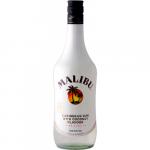Before purchasing different household appliances It is necessary to read the instructions for its operation, especially if this equipment is expensive. Any accidental breakdown can cost us a lot if we haven’t done it first. In particular, if it is a dishwasher that has recently entered our everyday life. The first dishwashers appeared at the end of the 19th century, and since then they have made the work of housewives much easier. This miracle technology has become an integral, very convenient part in household. What needs to be taken into account when using the unit, following the instructions for dishwashers?
Before moving on to detailed description instructions for dishwashers, let's see what's going on inside dishwasher at washing dishes?
What to consider when buying a dishwasher
Buying dishes washing machine, a reasonable owner should familiarize himself in advance with the safety rules for using a new purchase. Taking into account safety precautions for using a dishwasher includes several stages: delivery, installation, operation of the equipment. The first thing to do after delivery of the dishwasher is to check it for external and internal damage that may have occurred during transportation of the unit. If you find any damage, immediately contact the company where you purchased it. A damaged unit must not be used. All dishwasher packaging material should be recycled.
It is better to entrust the installation of a dishwasher to specialists, but if you want to do it yourself, then you need to take into account some points in the instructions for the Bosch, Ariston, Electrolux dishwasher. Installation is carried out only with the equipment disconnected from the power supply. The network dimensions must match those in the description of the machine. Required condition is the presence of correct electrical wiring. When installing equipment, it is necessary to take into account the location of the outlet for convenient operation.
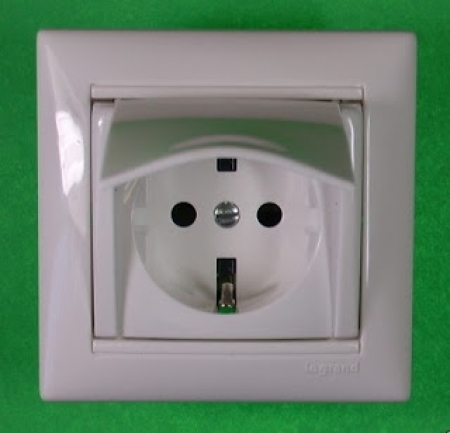
The dishwasher is installed horizontally and secured so that it is stable. When installing small dishwashers Kandy, Electrolux at height, it should be properly strengthened back wall. This is described in detail in the instructions for the Kandy, Electrolux dishwasher. A dishwasher cannot be installed in a building below zero degrees. If during installation side part the machine remains available, then in the interval between door hinges inlay must be made. To avoid various injuries and unexpected damage, the car door should always be closed, especially if there are children in the house. The instructions for the Siemens, Ariston, Indesit dishwasher describe in detail how to lock the machine to protect children from bruises and electrical injuries.
It is clear what needs to be taken into account according to the instructions for the dishwasher during installation, shown in the video below.
A short excursion inside the car
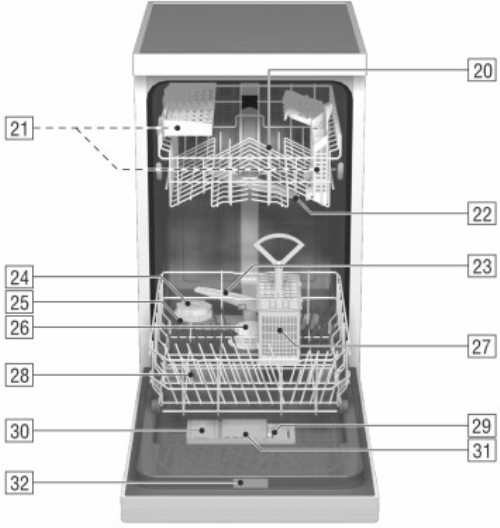
To understand how a dishwasher works, let's take a short tour inside the machine.
20 - upper basket
21 - additional container in the upper basket for washing spoons, forks, knives*
22 - sprinkler at the top
23 - sprinkler at the bottom
24 - salt tank with filling control lamp*
25 - toggle switch that determines water hardness
26 - filters
27 - container for knives, forks, spoons
28 - lower basket for dishes
29 - fixer
30 - reservoir for rinse aid, with volume control lamp*
31 - volume for filling with detergent
32 - company identification plate.
The asterisk indicates the features of some models; they are indicated in the instructions for the Ariston, Bosch, Siemens dishwasher.
Control mechanism
![]()
1 - dishwasher operating mode switch
2 - initial position
3 - working position
4 - door opening position
5 - mode of turning the machine on and off
6 - study of existing dishwasher operating modes
7 - regulation lamp*.
The features of the device for Ariston, Bosch, Siemens models are marked with an asterisk; they are described in the instructions for the Ariston, Bosch, Siemens dishwasher.
What does a caring housewife put in the dishwasher?
Regenerating salt
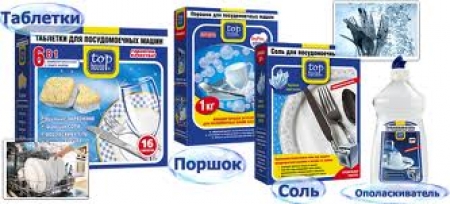
To ensure high-quality dishwashing, softened water should be used. In a regular water supply, hard water flows. You can make it soft using special salt, which is poured into the appropriate container. The amount of salt you add depends on the chemical composition of the water in your home. You should find out the relevant information from your water department. In some machines, like Bosch equipment, according to the instructions for the Bosch dishwasher, the Agu-Sensor system is provided, with the help of which chemical composition water is determined independently.
Filling with regenerating salt is carried out in the following way. Open the appropriate salt container. By using special device pour the product inside. First, you need to pour 1 liter of water into the same cavity. You need to add enough salt to completely fill the tank. This is about one and a half kilograms. To prevent metal corrosion, salt should be added immediately before washing dishes. The remaining salt on the machine should be removed and ensure that the reservoir is tightly closed. The salt reservoir in machines looks different, pay attention to this when reading the instructions for your dishwashers.
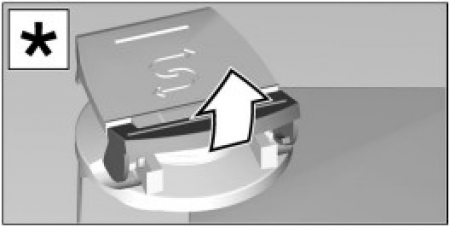
* Corresponds to the salt reservoir in the Electrolux dishwasher instructions.
Rinse aid
To give a unique shine to your glasses, as well as remove excess stains on your cutlery, you need to use a special rinse aid. It is recommended to fill the rinse aid using the following method. Open the lid of the rinse aid reservoir 30, holding it by the small elevation 2, and lightly press point 1. Fill in the rinse aid. Close the tank. At the same time, a click should be heard - an indicator of a tightly closed tank.
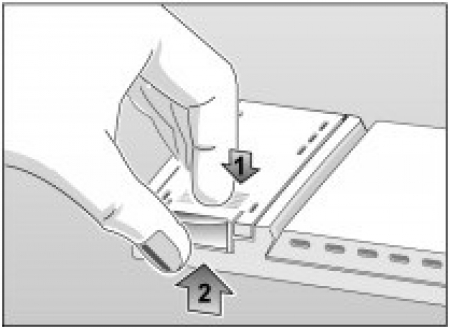
Detergents
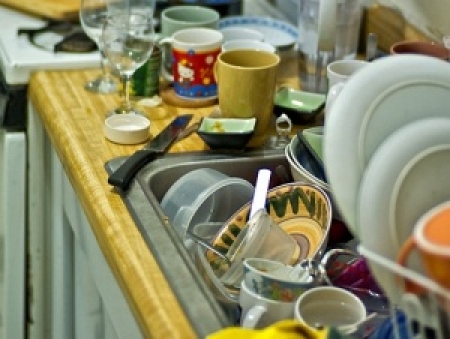
For washing dishes in dishwashers special products are used in liquid, powder or tablet form. You should not use detergents without phosphate components, otherwise sediment will remain on the dishes. Dishwashing detergent is placed in compartment 31. The quantity of the loaded substance is always indicated on the packaging container. Use compressed detergents only for intensive washing of dishes, since easy mode they do not have time to demonstrate their cleaning properties and do not dissolve well. In this case, it is better to use powder. If necessary, you can add it twice. It is recommended that if the dishes are not too dirty, put less detergent in the dishwasher than what is written on the packaging. Pay attention to the location of the compressed substances in the dishwasher: in the basket with spoons, forks, knives or in the detergent reservoir. Additional information You can find out about the use of detergents by contacting the company that produces them.
You can watch the fascinating process of washing dishes in this story.
What dishes does the dishwasher hate?

Before you move on to actually washing the dishes, you need to know which dishes should not be put in the dishwasher:
Wooden utensils;
Various dishes with decorative and artistic designs (it may be damaged when washing dishes);
Dishes made of plastic, copper, tin;
Dishes with stains of paint, wax, grease, gilded utensils;
You should not put items that absorb moisture well - towels, sponges, or any other things - into the car.
Choosing dishes glassware buy those that have a special designation
How to place dishes correctly
There are special recommendations for placing dishes. Always start placing dishes from the top section and try to fill them completely. Only according to the instructions for the Veko dishwasher can dishes be placed either up or down, and the instructions for the Indesit dishwasher provide for washing dishes when they are partially filled. Cups, glasses, deep containers must be placed with the convex part up. Insert flat plates horizontally into the cells of the basket. Knives and stabbing devices must be placed in a place specially designated for them. Forks and spoons are placed flat side down.
According to the instructions for the Candy dishwasher, there is a program for washing greasy baking sheets, so you can safely place them in the lower compartment. Pots, salad bowls, lids, and other larger dishes should be placed in the lower compartment. When placing dishes, make sure that they do not interfere with the operation of the sprinklers. It is better to wash dishes several times according to the instructions for the Electrolux dishwasher, as some of their models do not accommodate a large volume of dishes and have only one compartment.
In order for any equipment to serve for a long time and always be in good working order, it is necessary to take care of it. How exactly? Periodically, you need to clean an empty machine with special cleaning products. Check for grease and water deposits on the rocker arms. If they are detected, you should put the empty machine into operation with a special cleaning agent, at maximum temperature conditions water. The rubber layer on the door needs to be wiped damp cloth. And wipe the body of the machine with the addition of gel. Do not use steam cleaners or powder mixtures to clean the dishwasher.

Always monitor the filling level of the salt and rinse aid reservoirs 24 and 30. Check filters, top and bottom sprayers regularly. They may become clogged. If clogged, they need to be removed, washed under strong water pressure and put back. There are also some special features for caring for dishwashers from different companies. For example, according to the instructions for the Siemens dishwasher, a special system is built in that independently cleans the filters and the cavity of the machine. By following these simple rules for caring for your dishwasher, it is guaranteed to serve you for several years, giving cleanliness and comfort to your family.
Many housewives can no longer imagine their life without a dishwasher. This is equipment that can be installed so that it is almost invisible in the kitchen, or vice versa - it will emphasize modern style interior, significantly saves time, effort, promotes good mood. If a Bosch dishwasher has caught your attention, the operating instructions will help you quickly understand the controls and settings. In it, the manufacturer indicates the most important points from installation, technical parameters before using and disposing of the device. Let us draw your attention to the main points of the instructions.
General information
The instructions for the technique are quite detailed and supplemented with illustrations of examples. IN general view, the instructions for the Bosch dishwasher contain:
- Safety precautions.
- Instructions for connecting the device.
- Instructions for the first start.
- Overview of the operation and main parts of the device.
- Recommendations for the use of detergents.
- Options for placing dishes.
- Instructions and descriptions for programs.
- Recommendations for care.
- Possible malfunctions.
Safety precautions
When working with any household appliances, you must follow safety rules. The Bosch dishwasher is no exception. The operating instructions cover various cases: from the moment of receipt of the product to its installation and use:
Important! Upon receipt of the goods, the manufacturer recommends immediately checking the integrity of the packaging and the integrity of the device case. And if at this stage any malfunctions are noticed, then the device cannot be used, but you should contact the supplier to find out the reasons and indicate further actions.
Installation
During installation of the dishwasher Bosch machines device, you must strictly follow all instructions:
- Be sure to check whether the device is disconnected from the power supply;
- Study the manufacturer’s recommendations for the wire protection system and ensure their reliability;
- Compare the network characteristics with the parameters necessary for the operation of the device;
- Securely fix the device and ensure its stability;
- Provide easy access to connect and disconnect a device from the network.
Exploitation
The manufacturer has highlighted particularly important warnings separately:
- Sharp objects must be placed in a special compartment for cutlery with the point down, or horizontally in the compartment for dishes.
- Machines intended for use at home cannot be used in factories, cafes, or restaurants.
- Do not place heavy objects on the open door, sit down or stand up. Otherwise, the device will not support the weight and will tip over.
- Do not overload the baskets to avoid the device tipping over.
- Do not use solvents for cleaning. The device may explode.
- Never drink water from the dishwasher.
- Be sure to use quality detergents that are suitable for your type of machine and follow the manufacturer's instructions.
- If there are children in the house, it is better to use a device with a safety lock and do not allow children to use or play with the device. Detergents must be stored out of the reach of children.
- If it is necessary to repair the device, contact a qualified technician. All work must be carried out with the power turned off and no water supply.
Important! Also note that for different models This brand may have slight differences in operation, but the basic safety measures remain the same.
Installation
In order for your device to work for a long time, you need to connect it well.
Before connecting, check all the necessary parameters regarding hoses and power supply.
For successful installation, you must proceed in the following sequence:
- Checking the device upon purchase.
- Installation - all necessary steps are described in detail in the instructions for the specific model. Remember to level the device using adjustable legs so that the car does not rock.
- Connecting the device to the drain is done according to the instructions for the Bosch dishwasher, if necessary, an additional siphon is installed. Pay close attention to the quality of fasteners and sealing of joints, and also make sure that the hose does not bend.
- Connect the water supply according to the manufacturer's instructions. Connect the hose to the water tap and check that it is not pinched or kinked. The connection must be made to cold water.
Important! The water pressure must be at least 0.5 bar, but not more than 10 bar. If the pressure is higher, additional protection must be installed.
- Connection to the network - check that the voltage at the outlet matches the data specified by the manufacturer. The socket must be located near the device and be easily accessible for connecting and disconnecting it from the network.
In general, installing a Bosch dishwasher is no different from any other popular brand. But to avoid problems, be sure to study all the manufacturer’s recommendations and strictly follow their instructions.
After familiarizing yourself with safety precautions and installation rules, you need to figure out how to operate the device.
Device operation: basic rules
Turning on the machine for the first time is a very important undertaking; treat it with attention, because if you start working with the device incorrectly, there is a high risk of breakdown.
Please note that not all dishes are suitable for washing in the device.
List of unsuitable cookware:
- wooden utensils;
- antiques;
- thin-walled dishes;
- hand-painted dishes;
- plastic containers, glasses sensitive to hot temperatures;
- objects made of tin or copper;
- absorbent materials (textiles, sponges, etc.).
Next, you need to figure out how to place items for the best washing effect. 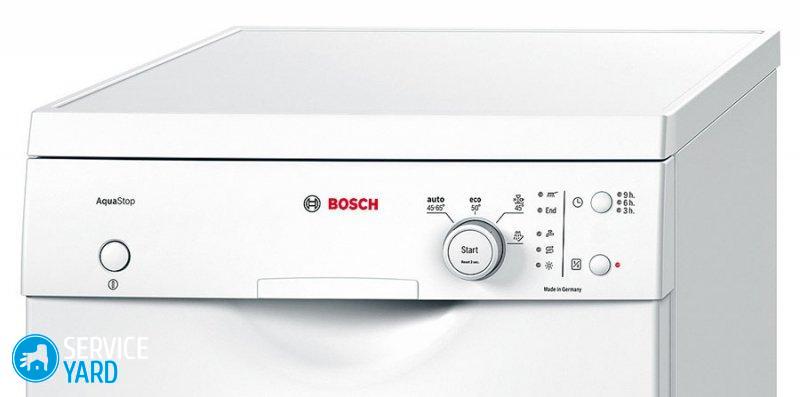
Location of items
To ensure that the operation of the device always pleases you, it is enough to follow simple rules.
Rules:
- Before placing dishes in the device, remove any remaining food, bones, or other large dirt from them. There is no need to rinse dishes before washing.
- You need to arrange the dishes so that they are in a stable position and do not interfere with the operation of the device. It is better to wash small appliances that fall out of the tray by hand.
- Spoons, forks and other utensils should be placed without sorting, with the concave side down. Sharp objects are placed point down in a special compartment.
- At the end of the washing cycle, first disassemble the lower tray, and then the upper one.
Also important point successful work dishwasher is the selection of detergent.
Using detergents
Today, a wide variety of products have been developed for dishwashers:
- Liquid;
- powdery;
- gel products;
- special tablets.
Important! Use only dishwasher-safe products, as regular hand-washing products can cause severe damage to your appliances.
The devices have a special compartment for detergents; the required dosage must be specified on the product packaging.
After choosing the right tool, you should understand the appropriate program.
Programs
On the device panel there is a reminder with the main programs available for your model.
Important! Be sure to take into account how dirty the dishes are, their volume and the material from which they are made, then you can choose the most suitable program.
If there are only a few dishes, then even with intense soiling you can choose a short washing cycle. After selecting the required program, you can connect the device.
Switching on, switching off and interrupting operation
To turn on the device, follow the following sequence:
- Open the water supply tap.
- Open the device door.
- Press the power button.
- Select the required program and press the corresponding button.
- Close the door.
The program will start after closing.
There is also a certain procedure for turning off the device:
- Wait until the cycle completes and the door unlocks.
- Open the door completely.
- Press the power button.
- Turn off the water supply (if the device is equipped with a Aquastop protection- you can skip this point).
- Wait for the cookware to cool down and remove it from the appliance.
If necessary, temporarily interrupt the washing cycle:
- Open the appliance door.
- Turn off the device using the on/off button.
- To continue the cycle, you must press the on/off button again and close the door.
Important! The installed program should be saved in the device’s memory, and it will resume its operation.
Another important point in the instructions is the manufacturer’s recommendations for caring for the device, its prevention, as well as tips for troubleshooting.
- Carry out regular inspection of the general condition of the device - for the presence of fat deposits and limescale. If present, take measures to eliminate deposits.
- Be sure to clean the gasket between the device and the door.
- Do not use products containing chlorine or steam cleaners for cleaning. This can lead to either machine breakdowns or chlorine particles getting into dishes and food.
- Be sure to wipe the control panel and walls of the device with a soft cloth.
- Do not use hard or metal sponges for cleaning as they may damage the device's casing.
- Check filters for contamination after each wash. If there is dirt, unscrew the filter, rinse it with cool water, and then put it back in place.
- Monitor the condition of the sprinklers; if they are dirty, remove them, wash them, and then put them back in place.
Important! If you take good care of the device, it will serve you for a long time and malfunctions will not occur. But if something in the operation of the machine bothers you, it is better not to wait, but to diagnose the problem in time.
Possible faults
Be sure to remember that if the device requires repair, you need to contact a professional.
Important! Use only quality materials and spare parts from the manufacturer, so you protect yourself and the device.
Breakdowns and their causes:
- The most common problem is the machine does not turn on. There are several possible solutions to this:
- check the fuse - it may be faulty;
- check the electrical connection;
- check that the door is tightly closed;
- Check the water supply and drain hose filters - they may be clogged.
- If the lower spray arm turns hard, check to see if there are any food residues or coarse dirt on it.
- If the detergent compartment does not close, it is possible that the measuring container is full or that residual detergent has stuck to the walls and is preventing the compartment from closing.
- If the machine turns on but the lights are blinking, you may not have selected a program.
- When the lights are on at the end of the cycle, the device is still working.
- If the device indicates that there is no water supply, you should check whether the tap is open. If the tap is open, check to see if the water has been turned off.
Important! Also possible options When this indicator lights up, the filter may be clogged or the hose may be kinked.
If there are breakdowns that cannot be dealt with on your own, you need to contact a service center.
If you use the device correctly and carry out the preventive measures- then you will provide yourself with a convenient and comfortable assistant for for a long time. The instructions for your Bosch dishwasher will help you with this.
Thank you for choosing this product.
The manual is divided into paragraphs that provide step by step description dishwasher functions, with clear instructions accompanied by detailed illustrations.
This manual provides quick and easy advice to answer all your questions regarding using your new dishwasher.
INSTALLATION INSTRUCTIONS: These are for
qualified
technique
, which should execute
installation, coupling and testingdevice.
USER INSTRUCTIONS: These consist of recommendations
how to usedevice, description of its control, correct
cleaning and maintenance procedures.
Safety Instructions
1. Safety and operating instructions
THIS MANUAL FORMS AN ESSENTIAL PART OF THE APPLIANCE: IT MUST BE KEPT. BEFORE USING THE APPLIANCE, READ ALL INSTRUCTIONS CONTAINED IN THIS MANUAL CAREFULLY.
INSTALLATION MUST BE PERFORMED BY A QUALIFIED TECHNICIAN IN ACCORDANCE WITH THESE INSTRUCTIONS. THIS APPLIANCE IS INTENDED FOR INDOOR USE AND IS COMPLIED EEC DIRECTIVES 72/23, 89/336 (INCLUDING 92/31) CURRENTLY IN EFFECT, INCLUDING THE PREVENTION AND ELIMINATION OF RADIO FREQUENCY INTERFERENCE.
THE DEVICE IS INTENDED FOR THE FOLLOWING PURPOSE: THE WASHING UPAND DRYING DISHES; ANY OTHER USE IS CONSIDERED INAPPROPRIATE. THE MANUFACTURER DISCLAIMS ALL RESPONSIBILITY FOR ANY IMPROPER USE OF THE PRODUCT.
A TITLE PLATE SHOWING TECHNICAL DATA, SERIAL NUMBER AND MARKING IS PLACED ON THE INSIDE EDGE OF THE DOOR. THE TITLE PLATE ON THE INSIDE EDGE OF THE DOOR SHOULD NEVERGET AWAY.
DO NOT LEAVE PACKAGING MATERIALS AT HOME. SEPARATE THE VARIOUS MATERIALS THAT CONSTITUTE THE PACKAGING AND TAKE TO THE NEAREST SPECIALIST DISPOSAL CENTER.
THE APPLIANCE MUST BE EARTHED IN ACCORDANCE WITH THESE ELECTRICAL SAFETY CODE. THE MANUFACTURER DISCLAIMS ALL LIABILITY FOR DAMAGE TO PERSON OR PROPERTY RESULTING FROM AN UNGROUNDED APPLIANCE OR DEFECTIVE GROUNDING.
IF THE APPLIANCE IS INSTALLED ON A CARPETED OR COVERED FLOOR, ENSURE THAT THE OPENINGS ON THE UNDERSIDE OF THE APPLIANCE ARE ACCESSIBLE FOR VENTILATION.
ALWAYS TURN OFF YOUR DISHWASHER AFTER EACH USE TO AVOID WASTING ELECTRICITY.
OBSOLETE INSTRUMENTS SHOULD BE REPRESENTED UNUSABLE. CUT THE POWER CORD AFTER UNPLUGING THE OUTLET, AND SEPARATE ALL COMPONENTS THAT MAY BE HAZARDOUS TO CHILDREN (LOCKS, DOORS, etc.).
Safety Instructions
THIS APPLIANCE IS MARKED ACCORDING TO EUROPEANDIRECTIVE 2002/96/EC ON UNNECESSARY ELECTRICAL AND ELECTRONIC EQUIPMENT (WEEE). BY ENSUREING THIS PRODUCT IS PROPERLY DISPOSED OFF, YOU AVOID POTENTIAL NEGATIVE ENVIRONMENTAL AND HUMAN HEALTH CONSEQUENCES THAT MAY BE CAUSED BY IMPROPER DISPOSAL OF THIS PRODUCT.
SYMBOL THE PRODUCT OR THE DOCUMENTS ACCOMPANYING THE PRODUCT INDICATES THAT THIS APPLIANCE IS NOT TO BE CONSIDERED AS HOUSEHOLD WASTE. INSTEAD, IT SHOULD BE TRANSFERRED TO AN APPLICABLE ELECTRICAL AND ELECTRONIC EQUIPMENT RECYCLING POINT. DISPOSAL MUST BE IN ACCORDANCE WITH LOCAL ENVIRONMENTAL INSTRUCTIONS FOR UNNESSED ELECTRICAL EQUIPMENT. FOR MORE DETAILED INFORMATION ABOUT THE RECYCLING, RESTORATION AND RECYCLING OF THIS PRODUCT, PLEASE CONTACT YOUR LOCAL CITY OFFICER, RECYCLING SERVICE OR THE STORE WHERE YOU PURCHASED THE PRODUCT.
IN THE EVENT OF BREAKDOWN, DISCONNECT THE DISHWASHER FROM THE POWER SUPPLY AND DISCONNECT THE WATER HOSE.
DO NOT USE DEVICES THAT HAVE BEEN DAMAGED DURING TRANSIT! IF IN ANY DOUBT, CONSULT YOUR DEALER.
THE APPLIANCE MUST BE INSTALLED AND CONNECTED IN ACCORDANCE WITH THE INSTRUCTIONS PROVIDED BY THE MANUFACTURER OR A QUALIFIED TECHNICIAN.
THE APPLIANCE IS INTENDED FOR USE BY ADULTS. DO NOT ALLOW CHILDREN TO ENTER OR PLAY WITH THE DISHWASHER. KEEP CHILDREN AWAY FROM DETERGENTS AND OPEN DISHWASHER DOORS. PACKAGING MATERIALS (POLYTHYLENE BAGS, FOAM, METAL BAR, etc.) SHOULD NOT BE LEFT WITHIN THE REACH OF CHILDREN.
KEEP CHILDREN AWAY FROM AN OPEN DISHWASHER. THE APPLIANCE MAY CONTAIN DETERGENT RESIDUE, WHICH CAN CAUSE PERMANENT DAMAGE TO THE EYES, MOUTH, AND THROAT, AS WELL AS POSSIBLE DEATH BY CHOKING.
DO NOT INTRODUCE SOLVENTS LIKE ALCOHOL OR TURPENING, WHICH MAY CAUSE AN EXPLOSION.
DO NOT LOAD DISHES THAT ARE CONTAMINATED WITH ASH, WAX OR PAINTS.
LEANING OR SITTING ON THE DISHWASHER DOOR WHEN IT IS OPEN MAY CAUSE THE UNIT TO TIP, RESULTING IN HAZARD TO PERSONS. NEVER LEAVE YOUR DISHWASHER DOOR OPEN; IS IT DANGEROUS.
User instructions
).
UNDER NO CIRCUMSTANCES DO NOT TOUCH THE HEATING ELEMENT AFTER THE END OF THE WASH PROGRAM. OVER TIME, THE HEATING ELEMENTS IN YOUR DISHWASHER MAY CHANGE THEIR COLOR, PARTIALLY OR COMPLETELY. THIS IS COMPLETELY NORMAL AND DOES NOT IN ANY CASE AFFECT THE OPERATION OF THE DEVICE.
DO NOT DRINK ANY AQUEOUS RESIDUAL THAT MAY BE PRESENT IN DISHES OR DISHWASHER AFTER A WASH PROGRAM AND BEFORE A DRYING CYCLE.
KNIVES OR OTHER SHARP Utensils MUST BE PLACED IN THE LOWER RACK OF THE DISHWASHER, OR PLACED HORIZONTALLY IN THE UPPER RACK. TAKE CARE NOT TO HURT YOURSELF AND ENSURE THAT THEY DO NOT FALL OUT OF THE BASKET.
AQUASTOPMODELS
AQUASTOP DEVICE PREVENTS FLOODING IN CASE OF WATER LEAKAGE. WHEN AN AQUASTOP DEVICE FAILS, CALL A QUALIFIED TECHNICIAN TO IDENTIFY AND CORRECT THE ERROR. MODELS EQUIPPED WITH AQUSTOP DEVICE HAVE A SOLENOIDAL VALVE IN THE WATER CONSUMPTION WATER LINE. DO NOT SHORTEN THE FIRE HOPE OR ALLOW THE SOLENOIDAL VALVE TO BE IMMEDIATE IN WATER. IN THE EVENT OF DAMAGE TO THE WATER HOSPITAL, DISCONNECT THE APPLIANCE FROM THE POWER SUPPLY AND FROM THE WATER SUPPLY.
IMMEDIATELY AFTER INSTALLING YOUR DISHWASHER, PERFORM A QUICK TEST OF THE APPLIANCE FOLLOWING THE INSTRUCTIONS BELOW. IF THE DISHWASHER IS NOT ABLE TO OPERATE CORRECTLY, DISCONNECT IT FROM THE POWER SUPPLY AND CONTACT YOUR NEAREST SERVICE CENTER. DO NOT ATTEMPT TO REPAIR THE APPLIANCE.
THE DISHWASHER MEETS ALL ELECTRICAL SAFETY REQUIREMENTS. ANY TECHNICAL INSPECTIONS SHOULD BE CARRIED OUT BY A TRAINED AND AUTHORIZED TECHNICIAN SOLELY: REPAIRS PERFORMED BY UNAUTHORIZED PERSONS WILL VOID THE WARRANTY AND ALSO CREATE A POTENTIAL HAZARD TO THE USER.
The manufacturer declines all liability for damage to persons or property resulting from failure to observe the above precautions, modification of the design and components of the device, or from the use of non-original spare parts.2. Installation and coupling
Remove packaging material.
Place the device in the desired installation location. The back or sides of the dishwasher can be placed near walls or other pieces of furniture. If the dishwasher is installed near a high temperature source, use a special thermal insulation panel to prevent overheating and failure of the appliance. To ensure vibration resistance, place the dishwasher on a stable platform and secure it to adjacent kitchen units. To facilitate the installation procedure, intake and drain nozzles can be placed in any plane; Make sure that the fire nozzles are not bent, pinched or pulled too hard. Make sure the grip ring is tightened once the pipes have been placed in the required direction. A hole at least 8 cm in diameter must allow the passage of the power cable and pipe.
Level the appliance on the floor using its adjustable feet. This action is essential to ensure right action dishwasher.
Integrating a dishwasher into ceramic plate absolutely prohibited.
The dishwasher can be built into a regularstove, if dishwasher and stove installed and secured correctly, so that no hazards were generated.
For standalone models only
Installing a stove on top of a free-standing dishwasher is strictly forbidden.
If the device is not built-in and therefore accessible from one
side, the door hinge area should be covered for safety reasons. Cover mounts are available as an add-on from dealers or aftermarket.
To install a dishwasher, special kit must be purchased from authorized dealers or after-sales service.
Some models are equipped with only one adjustable leg at the rear, which can be adjusted by turning a screw on the lower front of the unit.CONNECTION TO WATER SUPPLY
Connect the consumption hose to the supply cold water With 3/4
hose, inserting the filter provided with the dishwasher. Take care to screw the nozzle tightlyhands and then press completely in half a turn using pliers.
In dishwashers equippedACQUASTOPdevice, the filters are already fitted in the mountingring.
The dishwasher may also be connected to hot water , Notexceeding 60°C. Supplying the appliance with hot water reduces the washing time by approximately 20 minutes, but slightly reduces its efficiency. Connect hot water using the same procedure described for connecting cold water.
DRAIN INSTALLATION
Insert the dishwasher drain nozzle into a drain pipe having a diameter of at least 4 cm, or alternatively, place the hose in the sink sink using a plastic clamp, taking care not to break or excessively bend the nozzle. It is important to keep the hose from free falling. For this purpose, the plastic clamp is equipped with a hole for connecting it to the walls of the sink or drain
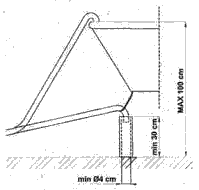
The free end should be placed at a height between 30 and 100 cm, and should never be immersed in water. If a horizontal drain extension cannon is used (maximum up to 3m), a leak cannon can be placed on maximum height 85 cm from the base.
2.2 Electrical connection
Connect the power cord to a suitable electrical outlet according to the instructions given in chapter "1. Safety and Operating Instructions".
3. Description of control 3.1
Front Panel
All dishwasher controls are grouped on the front panel, which has different shape depending on the model.
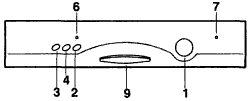
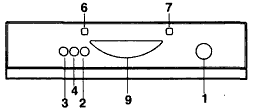
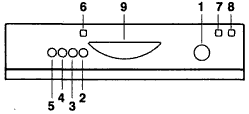
1 CHOICEMODEWASHING(PROGRAM SELECTION)
2 ON\ OFF BUTTON (ON\OFF)
4 BUTTON ECONOMIC WASH PROGRAMS(ECO)
5 BUTTON TOP QUALITY WASH PROGRAMS (SUPER) (some models)
6 TURN ON LIGHTING (PILOTLIGHT)
7 SALT (SALT) WARNING LIGHT
8 RINSE (RINSE) WARNING LIGHT (some models)
9 OPENING THE DOOR HANDLESETTING THE WASHING PROGRAM
To select the most suitable wash program, please refer to the following table, which shows the recommended wash according to the type of food and heat level.
After studying the table, turn the button to call up the corresponding wash program SELECTING A PROGRAM(PROGRAMSELECTION) (1 ) (see section "3. Description of control") to set the selection program, select the index with the number of the corresponding program.
If necessary, depending on the selected program, press one of the keys ( 3,4,5 ), which allow selection 1/2 WASH LOAD, ECONOMIC WASH PROGRAM (ECO) or SUPERIOR WASH PROGRAM. After that just click ON OFF(ON\OFF) button (2) will start the program. The light comes on inclusion(PILOT LIGHT) (6)
Program table (3-button model)
| Switch cycle and button | Washing program | Detergent quantity | duration | consumption | |||
| grams | minutes | Amount of water (l.) | Power (KW/h) | ||||
| 1 | Soak | Cold soak | - | 6 | 4 | - | |
| - | |||||||
| 2 | SUPER 65°C | Coldsoaking washing65°CRinse6 8 °CDrying |
30 | 90 | 22 | 1,55 | |
| 1/2 | |||||||
| 3 | NORMAL 60°C(*) EN 50242 |
Sink 60°CRinse 68°C |
30 | 90 | ** | ** | |
| 1/2 | |||||||
| 4 | Daily 60°C | the dishes are normally dirty | Sink 60°CRinse 68°C |
30 | 76 | 18 | 1,24 |
| 1/2 | |||||||
| 4 | ECONOMY 50° C | the dishes are slightly dirty | Sink 50°CRinse 68°C |
30 | 70 | 14 | 1,20 |
| ECONOMY (ECO) 1/2 | |||||||
| 5 | rinse (RINSE) | dishes for rinsing | Rinse 68° C Dry | - | 45 | 9 | 0,80 |
| - | |||||||
half loaded. LOAD)
(*) Program according to the recommendation of the EN 50242 standard.
(**) See energy label.
(-) absent.
level 2.
The wash cycle will not start if the doordishwasher openor not properly closed.
Program table (4-button model)
| Switch cycle and button | Type and degree of soiling of dishes | Washing program | Detergent quantity | duration | consumption | ||
| grams | minutes | Amount of water (l.) | Power (KW/h) | ||||
| 1 | Soak | Pots and dishes waiting to be washed | Cold soak | - | 6 | 4 | - |
| - | |||||||
| 2 | SUPER | Very dirty, dried out pots and dishes | CRinse 68°CDrying |
10+25 | 110 | 22 | 1, 65 |
| SUPER 65°C 1/2 | |||||||
| 2 | BIO 55°C(*) |
pots and dishes are normally dirty | Cold soak Wash 55°CRinse 68°CDrying |
30 | 96 | 18 | 1,28 |
Economy 55°C(1/2) |
|||||||
| 2 | Normal 65° C | pots and dishes are normally dirty | Cold soak Wash 65°CRinse 68°CDrying |
30 | 100 | 18 | 1,45 |
| 1/2 | |||||||
| 3 | Economy 55°C(* **) EN 50242 |
pots and dishes are normally dirty | Sink 60°CRinse 68° C Dry |
30 | 95 | ** | ** |
| 1/2 | |||||||
| 3 | Daily 60°C | the dishes are normally dirty | Sink 65°CRinse 68° C Dry |
30 | 92 | 16 | 1,40 |
| 1/2 | |||||||
| 4 | Gentle 45° C | the dishes are slightly dirty | Sink 45°CRinse 68° C Dry |
25 | 62 | 13 | 1,10 |
| 1/2 | |||||||
| 5 | rinse (RINSE) | dishes for rinsing | Rinse 68° C Dry | - | 45 | 9 | 0,80 |
| - | |||||||
Only use the soaking programhalf loaded. LOAD)(3) available for all programs except for the soaking program.
(*) The program is recommended when using “new generation” detergents containing enzymes.
(**) See energy label.
(***)Program according to the recommendations of the EN 50242 standard.
(-) absent.
(1) Average power consumption with softener set to level 2.
(2) Cycle time and power consumption may vary depending on the properties and temperature of the water, type and quantity of dishes.
User instructions
CERTIFICATION TABLE
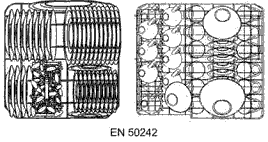
3.2 Washing programs
Before starting the washing program, make sure:
Water comes in in the car.
Add required amount detergent.
There were baskets loaded correctly.
The machine's sprinklers are capable of rotate
free and withoutobstacles.
Dishwasher door securely closed.
HALF LOAD SELECTION
This function is most suitable for loading up to 6
seat assignments
and saves water
and electricity. This mode is set by button (3)
HALF LOAD(see section "3. Description of control")
and washes only in the upper basket
IMPORTANT: at the end of the program don't forget disable operating mode so as not to repeat the washing process by mistake.
The cutlery basket can be placed in upper basket, while lower the basket must be left empty.
WARNING: There is no point in loading dishes and cutlery into lower basket, since splashing reaches only the upper basket.
CANCELING THE CURRENT PROGRAM
To cancel a program in progress, the dishwasher must be turned off using the button ON/ OFF (2)
Turn the program selector to SOAK and wait for the wash to start. At the end of the program, turn off the dishwasher by pressing ON/ OFF button (2).
PROGRAM CHANGE
To change a program in progress, the dishwasher must be turned off using the button ON/ OFF (2) (see section "3. Description of control").
Turn the program selector to the program required and then switch the
dishwasher on again by pressing ON/OFF key (2). The dishwasher will
carry out the new program automatically.
SAVE ENERGY!...AND PROTECT THE ENVIRONMENT
Try to use a dishwasher , fully loaded.
Do not wash dishes in running water.
Use a wash program that is most appropriate each type of download.
Do not perform any pre-rinse.
If possible, connect the dishwasher to the hot water supply until60°C.
If possible, after the end of the drying cycle leave the door open: residual air and high temperature will disappear and the dishes will dry completely.
REDUCE DETERGENT CONSUMPTION!... AND PROTECT
ENVIRONMENT
Phosphates contained in dishwasher detergents are harmful to environment. To avoid using excessive amounts of detergent and save on electricity costs, do the following:
Sort the dishes that are most
resistant to aggressive detergents and high temperatures;
don't pour detergent directly onto the dishes.
If it is necessary to open the dishwasher door during a wash cycle, it will 1 minute delay before the program can be resumed.After closing the door correctly, the washing program will begin again from the stageat which it was interrupted. This action Maybe negative affect progress washable cycle.
ENDCYCLE
At the end of the wash, the wash mode selector will stop at one of the markers STOP, depending on the executed program. Turn off the dishwasher by pressing ON OFF key (2) (see section "3. Description of control").
REMOVING DISHES
At the end of the washing program, wait at least 20 minutes before removing the dishes from the machine and allowing them to cool. To prevent water from dripping from the upper basket onto the food in the lower basket, preferably first unload the lower basket, and then the upper basket.
4. Operating instructions
Once the dishwasher has been correctly installed, prepare for use as follows:
Adjust the water softening system;
Add regeneration salt;
Add rinse aid and detergent.
4.1 Using a water softening system
The dishwasher is rated for water hardness level 3 (medium hardness 41-60°dF-24-31°dH).
When using medium hard water, the regeneration salt container must be filled again after approximately 20 wash cycles. The salt container can hold approximately 1.7 kg of salt per grain. Some models are equipped with an optical salt remaining indicator. On these models, the salt container lid contains a green float that moves down with the salt level. When the green float can no longer be seen through the transparent lid, the container must be filled with salt again. The container is located at the base of the dishwasher. After removing the lower basket, unscrew the lid of the salt container by turning it counterclockwise and pour in salt using the funnel provided with the dishwasher. Before screwing on the lid, remove any remaining salt from the screw. 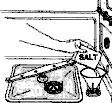
When using the dishwasher for the first time, in addition to salt, you must add one liter of water per container.
Each time the salt container is refilled, make sure that the lid is securely closed. A mixture of water and detergent should neverpenetrate the salt container as this will jeopardize the effect
water regeneration systems. In case of this error,
the warranty will be void.
ANDUse salt specifically intended for
dishwasher. When using salt tablets, do not fill the container
fully.
Do not use table salt , since it contains insoluble substances which,Over time, they can damage the water softening system.
When necessary, refill the regeneration salt container before
started washing.
There should be excess saltimmediately removed with water; long-termthe presence of salt in the tank can lead to corrosion.
Be careful not to confuse detergent packets with salt; additiondetergent in salt container will damage water softening system.
SETTING UP A WATER SOFTENING SYSTEM
The dishwasher is equipped with a device for the user to adjust the water softening system according to the hardness of the local water.
According to the machine model, the regulator can be located:
in plastic that locks the ring located on right side, inside
dishwasher;
- in the water softener, under the lid.
There are 5 adjustment values:
WATER HARDNESS TABLE
Contact your local water utility department for information regarding the hardness of your water.
4.2 Using rinse with detergent
Detergent and rinse are located in compartments on the inside of the door: detergent department- on the left, and rinse aid department- on right. 
With the exception of the soak program (SOAK), before each wash cycleyou need to add the required amount of detergent into the detergent compartment. Rinse aid in another compartment, as needed.
ADDING RINSE AID
Rinse aid helps food dry faster and prevents streaks from forming; The machine automatically adds rinse aid to the water during the final rinse cycle, from a container located on inside doors.
Open the door.
Rotate the container lid counterclockwise 1/4 turn and remove it.
Add rinse aid until the container is full (approximately 140 cc).
The optical level indicator on the side of the cover should be
completely darkened. Refill the rinse aid when the optical level indicator becomes clear again, or when the warning light comes on.
Replace the cover and screw the cap clockwise.
Use a cloth to remove excess rinse aid, which may cause excess foam to form.
ADJUSTING THE RINSE AID SUPPLY
The dishwasher is designed for medium-hard water. However, this can be changed by adjustment, turning the supply control to the desired position: the amount of rinse aid supplied is proportional to the position of the selector.
The setting should be increased when washed dishes appear dull or coated with scale.
- To regulate the flow of rinse aid, unscrew the lid of the container.
- Use a screwdriver to turn the rinse aid control to the desired position.
- Screw on the cap by turning it clockwise.
- The amount of rinse aid should be increased if washed dishesappear dull or covered in limescale stains.
ADDING DETERGENT
To open the detergent lid, press the button lightly P. Add detergent and close the lid tightly. During the wash cycle, the feed is automatic. 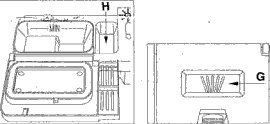
When a program is selected HIGHEST QUALITY, in addition to the normal dose of detergent, it is necessary to add an additional amount inside the compartment G or H.
Use only detergents specifically designed for dishwashers. ForFor optimal cleaning, it is important to use high-qualitydetergent.
Detergent packets should be sealed and stored in a dry place forprevent the formation of lumps that could adversely affect washing results. Once the detergent packets are opened, they should not be stored for long, otherwise the detergent will lose its effectiveness.
Do not use detergents intended for hand washing dishes.because they produce a lot of foam and can negativelyaffect the operation of the dishwasher.
Add the correct amount of detergent. Using too little detergent results in partial removal of dirt from dishes, while too much detergent is wasteful and does not improve washing results. The market offers liquid and powder detergents with differentchemical composition, which may contain phosphates, or bewithout phosphate, but contain natural enzymes.
Detergents containing phosphates more effective againstfat and starch at temperatures above 60°C.
Detergents with enzymes, are also effective at more low temperatures (40 to 55°C) and are more easily degraded by microorganisms. With detergents containing enzymes it is possible to obtain results at low temperatures comparable to those that can be achieved using traditional detergents at 65°C.
• Detergent tablets are also available which ensure that no salt orrinse aid In some cases, these detergents may not providegood results, especially with short or low-temperature washes.
If washing problems occur (for example, white coating on dishes,dirty on dishes), we recommend returning to regular detergents (granulated salt, powder detergent and liquid rinse aid).
However, please note that upon returning to using regular salt,several washing cycles are required before the system is restoredagain, so that traces of the white coating can still be found ontank and dishes. If the problem persists for too long, contact the technical assistance center.
• When using detergent in tablet form (meaning that weWe recommend using three separate products: detergent, salt andrinse aid), place the tablets in the rack cutlery. Innings, the detergent is not carried out completely induring the wash cycle. This means that the tablethas not completely dissolved, this is causedas follows:
not enough detergent released during the cycle, with poor washing results;
detergent gets stuck in and is releasedduring the final rinse cycle.
Introducing detergent into the rinse aid compartment, even in liquid form, will harm the dishwasher.
Before using your dishwasher for the first time, it is advisable to read the following guidelines: types of cookware which is loaded into the washing machine .
There are no restrictions on washing dishes at all,but in some cases it is necessary to take into account their characteristics.
Before loading food into baskets, you must:
remove any remaining food: e.g. bones, fish bones, etc. whichmay clog the filter or damage the pump.
Remove any residue from the dishes, then place them in the lower BASKET.
If a small number of dishes need to be washed, use half load mode; this will save electricity and water.
Remember to load the top basket only; lower basket follows leave empty.
There is no need to wash dishes in the tap beforeloading them into baskets.
WARNING!
Make sure dishes are securely secured in place so they cannot tip over or interfere with the rotation of the spray arms during the wash cycle.
Do not place very small items in the basket as they may fall out and cause interference..
Containers such as cups, balls, glasses and pots should always beload open, neck down and at an angleto allow water to drain.
Do not load dishes in such a way that they covereach other.
Don't load glasses too close together because they may knockeach other and rattle, or may break.
MAKE SURE items are dishwasher safe.Items that are not dishwasher safe:
Wooden dishes, pots or pans:
they may be damaged
high temperature washing.
Products self made: they are rarely suitable for washing indishwasher. Relatively high temperatures andThe detergents used may damage them.
Plastic dishes: Heat-resistant plastic dishes should be washed intop basket.
Dishes made of copper, tin, zinc: they tend tooxidation.
Aluminum dishes: products made from anodized aluminum canlose your color.
Silver: Silver items may oxidize.
Glass:
In general, glass and crystal products can be
washed in the dishwasher. However, some types of glass and
become faded and lose their crystalline quality after many
washing cycles. Therefore, we recommend washing these products when usingleast aggressive programs available.
are not dishwasher safe,
colors may fade. If you
doubt the durability of the flowers, it is advisable to wash only
few items at a time for approximately one month.
4.4 Using baskets
The dishwasher has a capacity of 12 place assignments, including serving dishes.
Lower basket
The lower basket receives full force from the lower spray arm and should therefore be used for the "dirtiest" items with the most dirt.
All types and combinations of cargo are permitted,
provided that dishes, pots and pans are directed with contaminated surfaces towards the water sprinklers located at the base.
To maximize space in the basket when loading large items, some models are equipped with folding support plates in 2 or 4 sections
With installed supportsfolding supports
Load flat plates, deep dishes, dessert utensils and cutlery, placing them vertically. Pots, pans and their covers should be loaded upside down. When loading deep plates and dessert dishes, be sure to leave space between them.
Download examples:

BASKETDININGDEVICE
The basket has replaceable top grids into which cutlery items can be inserted to keep them properly separated and allow water to pass between them efficiently. The cutlery supports and center lid are contained in the accessory bag. The central lid is intended to act only as a cover: do not place cutlery in it:
Cutlery should be arranged in an organized manner in a basket, with handles pointing downwards. Take care during loading to avoid injury from knife blades. The basket is suitable for all types of cutlery, except those long enough to interfere with the overhead sprinklers. Ladles, wooden spoons and cooking knives can be placed in the upper basket, make sure that the knife bladesdo not protrude from the basket.
UPPER BASKET
It is recommended to load the upper basket with small or medium-sized items such as glasses, small spoons, tea or coffee cups, small bowls and lightweight items made of heat-resistant plastic. If the upper basket is used in the lowest position, it can also be loaded with serving dishes if they are only slightly dirty.
To make full use of the available space, the top basket has two plastic grids that can be raised to create space for tall wine glasses.
Weight plates pushed forward; wine glasses, sets, etc. must always be placed upside down. Left-hand side The basket can be loaded with two layers of glasses and glasses. The center can be filled with plates and dessert plates, in an upright position.
Loading example:
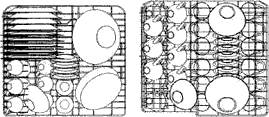
ADJUSTING THE UPPER BASKET
The upper basket can be adjusted in two positions, according to the needs of the user and according to the height of the dishes in the lower basket. Proceed as follows.
Retreat version:
remove the right basket guide;
remove the stop by first releasing it as shown in the figure;
close the guide, releasing the wheels;
fit the upper or lower pair of wheels in the guide, depending on the required installation;
Return the installation to its original position.
Version with button:
Pull out the basket and pull right side
up. At this point it is possible to load large plates into the lower basket.
To return to the original position, withdraw the upper basket again and press the release lever.
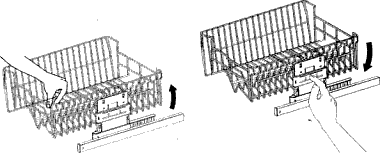
5. Cleaning and care
Before carrying out any work, always turn off the device
from power supply.
5.1 General recommendations
Do not use acidic or abrasive detergents.
Clean the exterior surfaces and surface of the dishwasher door regularly using a soft cloth dampened with water or a normal detergent suitable for painted surfaces.
Clean the door gaskets with a damp sponge.
Periodically (once or twice a year) it is advisable to clean the tank and gaskets using a soft cloth and water to remove any deposits.
CLEANINGWATERFILTERCONSUMPTION
The water consumption filter located at the outlet of the water supply hose must be cleaned periodically.
After closing the water supply signal, unscrew the end
consumption fire nozzle, remove the filter and rinse it with waste water
water. Re-install the filter in its place and securely screw the consumption fire nozzle back into its working position.
CLEANING THE SPRAYERS
The spray arms can be easily removed for periodic cleaning of the nozzles, preventing possible clogging. Wash them in running water, and carefully put them back in place, checking that there is nothing obstructing their rotating movement.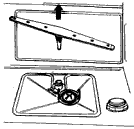

To remove upper sprinkler, unscrew the clamp, look R.
To remove lower sprinkler, simply remove it by pulling the center part.
CLEANING THE FILTER
It is advisable to periodically inspect the central filter C and, if necessary, to cleanse the ego. To remove the filter, grab the bills, turn them counterclockwise and lift them up;
pull out the central filter D from the bottom side, freeing it from the microfilter;
separate the two parts that make up plastic filter, pressing the filter in the area shown by the arrows;
remove the central filter, pulling the ego upward.
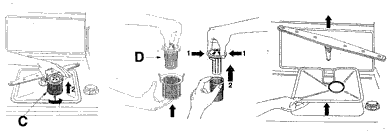
Filters must be cleaned under the water supply using hardbrush.
It is essential that the filters have been completely cleaned, according toinstructions above: The dishwasher cannot function if the filtersclogged.
Replace carefully filters in their places, avoiding damage,wash the pump.
LONG-TERM NON-USE OF THE MACHINE :
Rinse the machine.
Disable power cable from the socket.
Leave the door a little open to prevent the formationunpleasant odors in the rinsing tank.
Disconnect the water supply hose.BEFORE USING THE DISHWASHER AFTER A LONG TIME NOT USED:
Check that there are no sediment deposits or rust in the waterpipe: if there is one, flush the hose waste water, allowing the water to run away from the water supply for a few minutes.
Plug in the power cord back to the nest.
Reconnect the water supply nozzle, and open the water again.
TROUBLESHOOTING, MINOR PROBLEMS
In some cases, to fix minor problems:
If the program fails to start, check that:
The dishwasher is connected to the power supply;
no power failures;
water enters the machine;
The dishwasher door is properly closed.
If water remains in the dishwasher, check these:
the drain nozzle is not clogged;
the drain siphon is not clogged;
The dishwasher filters are not clogged.
If dishes are not being cleaned properly, check that:
the correct amount of detergent is used;
there is a reducing salt in a special container;
dishes are loaded correctly;
the selected program is suitable for the types of food and their degree of soiling;
all filters are clean and placed correctly;
sprinkler nozzles are not clogged;
there is no interference to hinder the rotation of the sprinklers.
If food fails to dry or remains damp, check the following:
Availability of rinse aid in a special container;
Correct installation rinse aid supply;
The detergent used is good quality, and didn't loseeffectiveness (for example, through improper storage, in an open box).
If there are white spots on your dishes, check:
• The rinse setting is not too high.
If there are visible signs of rust in the tank:
the tank is made of high grade steel, and therefore any rust is due toexternal elements (rust fragments from water pipes, pots,cutlery, etc.).;
Check that the amount of detergent used is sufficient. ActiveDetergents may be more corrosive than others.
check that the lid of the salt container is securely closed, and
The water softening adjustment is appropriate.
If after the above troubleshooting instructions the problempersists, contact your nearest technical service center.
WARNING: any actions performed on the device by unauthorized persons, are not covered by warranty and must be paid by the user.
SpecificationsWidth |
597-599 mm |
Depth from Free standing: 600 mm outer edge of the control panel |
Free position: 600 mm Built-in: 570 mm |
Height |
Free position from 850 mm to 870 mm Built-in from 820 mm to 870 mm |
Capacity |
12 standard seats |
Water supply pressure |
min. 0.05 - Max. 0,9 M P a (min. 0.5 - Max. 9 bar) |
Electrical characteristics |
See rating plate |
Today, almost every home has a washing machine, refrigerator and stove. A microwave will not surprise guests either. But a dishwasher is still a rare thing in our kitchens. Such automation is considered a luxury item, and not a device necessary for every housewife.
However, this point of view cannot be called correct. It is unlikely that anyone enjoys the process of washing dishes. It not only takes a lot of time, but also harms the skin of your hands. In addition, the price of a modern dishwasher is not so high. It is similar to the cost washing machine, which no housewife can do without.
Necessary purchase
The benefits of a dishwasher are obvious. This device does a very unpleasant job for its owners, giving them a lot of free time. At the same time, the machine washes dishes much more better than man. In addition to the fact that kitchen utensils are washed simply perfectly, they are also dried. As a result, the housewife no longer needs to wipe steel pans or glass glasses so that unsightly stains do not remain on them.
In addition, the machine achieves excellent results with a minimum amount of water. She will spend it ten times less than a person washing it by hand. This is also an important factor that testifies in favor of this device.
Choosing a kitchen helper
If you decide to purchase a dishwasher, then, first of all, you should decide on the brand of the device. This is a very important matter, because the device is long years should become a reliable assistant to the housewife and please her with his results. And for this, the design of the device must certainly be brought to perfection and thought out right down to the very small detail. The Bosch dishwasher undoubtedly meets these requirements. Consumer reviews about this technique are usually positive character. And this is not at all surprising, because Bosh is distinguished by a professional and competent approach to the creation of any equipment it produces. The Bosch dishwasher is no exception. Customer reviews rate it highly high quality and a variety of models, including both built-in and solo options.
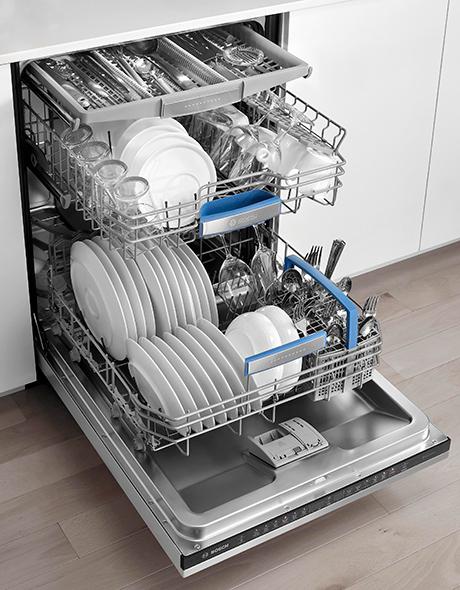
Of course, at first glance, all dishwashers are the same. However, anyone who has already used Bosch brand equipment understands that the products of this famous company will definitely have undeniable advantages. To verify this, just study the responses of customers who already have a Bosch dishwasher in their kitchen. These reviews indicate that Bosch is distinguished by a very serious approach to business and the interests of its consumers.
Advantages of Bosch kitchen helpers
The latest models of appliances designed for washing dishes have undergone significant design improvements. In connection with this, the Bosch dishwasher began to have a large working space. Customer reviews confirm that it can hold one more set of dishes than other devices of similar sizes. At first glance, such a detail seems to be insignificant, but it provides more convenience during operation of the device.
The modern design of the Bosch dishwasher provides for the placement of a separate low basket for cutlery. This allows you to minimal costs time to put small items into the machine, which also generates more positive customer reviews.
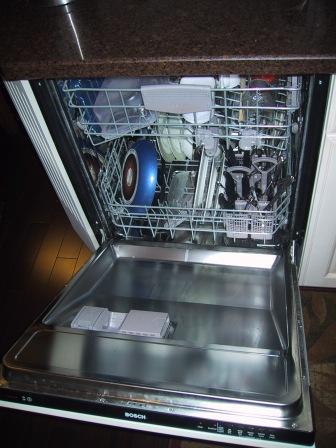
Bosch dishwashers are also characterized by a wide range of different functions. This allows you to select a program for any occasion, as well as supplement the desired mode with one or another action, for example, more intensive washing in the lower basket. This function will allow you to place heavily soiled pots and pans at the bottom, and place delicate ones in the upper box.
Some models of Bosch dishwashers have the function of hygienic processing and reduction of washing. In such devices, a special distribution of water occurs using a double rocker. This leaves no places in the unit that are difficult to clean, which leads to excellent results.
Potential buyers are attracted by the reliability of Bosch equipment. This is evidenced by a large number positive feedback. The excellent quality of the company’s devices has been confirmed by time itself. That is why this brand is trusted by those buyers who are very careful when choosing equipment for their home.
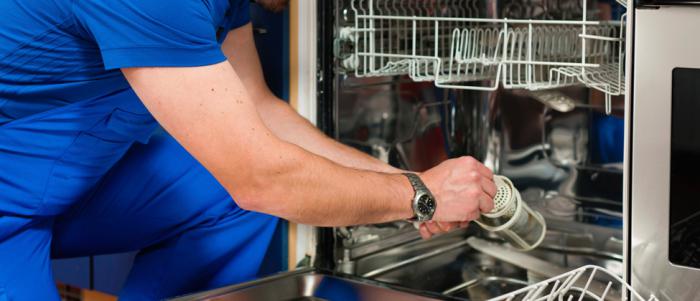 In order for your Bosch dishwasher to last as long as possible, the operating instructions must be read before installing it. In addition, it is necessary that the installation of the device be carried out by a specialist.
In order for your Bosch dishwasher to last as long as possible, the operating instructions must be read before installing it. In addition, it is necessary that the installation of the device be carried out by a specialist.
Variety of models
Buying a dishwasher for a family of four will save almost two hundred hours over the course of a year. This is a strong argument in favor of the described household appliance.
All models of Bosch kitchen units are divided into full-size and compact (tabletop). In the first option, the height of the device will be 80 cm, and its depth and width will be 60 cm. Compact narrow machines have smaller dimensions, which are equal to 45 cm by 56 cm by 46 cm. This technique is called tabletop.
A Bosch dishwasher, 60 cm wide and deep, is capable of washing a significant amount of dishes, but at the same time it must be given special space in the kitchen. more space. When installing compact options no need to move furniture in search of treasured meters. But in terms of the volume of dishes placed in them, they are suitable, for example, for bachelors. Which dishwasher to choose is up to you, based on your existing needs.
Principle of operation
In order to wash dishes, they are placed in the unit. Detergent is also placed there. Next, select the desired program and launch the device by pressing the “Start” button. That's all. In just two hours you will have not only clean, but also dry kitchen utensils at your disposal.
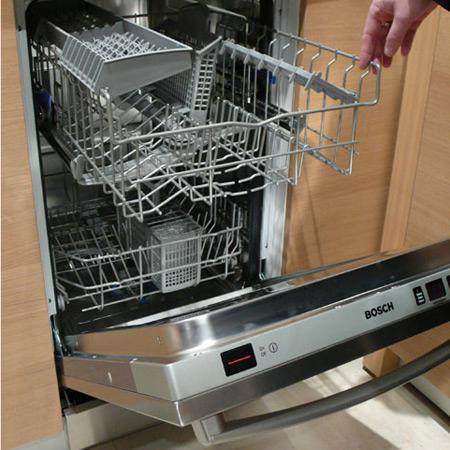 Before using the Bosch dishwasher, the instructions for use must be studied. This will allow you to correctly install one of the necessary programs, of which large-sized models contain from six to ten, and compact models contain from four to five. The difference in modes lies in the temperature and washing time. In the instructions for the unit you can also see the presence of a special program designed for cleaning fragile glassware.
Before using the Bosch dishwasher, the instructions for use must be studied. This will allow you to correctly install one of the necessary programs, of which large-sized models contain from six to ten, and compact models contain from four to five. The difference in modes lies in the temperature and washing time. In the instructions for the unit you can also see the presence of a special program designed for cleaning fragile glassware.
Typically, the dishwasher heats the water to sixty-five to seventy degrees. But despite this, overly dirty pots and pans should be soaked before loading and washed a little by hand. Otherwise, the machine may not be able to do its job.
Cups and plates in the dishwasher are cleaned with strong water jets from the shower heads. To eliminate this, many Bosch models have a filter filled with
Drying process
When choosing Bosch dishwasher models, you need to pay attention to everything design features unit. Drying dishes is no exception. The thing is, washing is only half the battle.
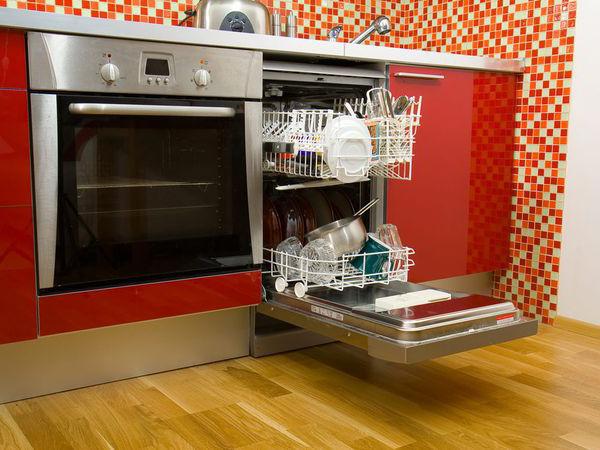 The most economical and simplest method of drying is evaporation of moisture. Water is removed from the surface of the heated kitchen utensils, turning into condensation, and, rolling to the bottom, is discharged through a special drain. Some dishwasher models are equipped with a Turbo Dry system. It heats the air in the washing chamber and dries the dishes using the principle of a hair dryer.
The most economical and simplest method of drying is evaporation of moisture. Water is removed from the surface of the heated kitchen utensils, turning into condensation, and, rolling to the bottom, is discharged through a special drain. Some dishwasher models are equipped with a Turbo Dry system. It heats the air in the washing chamber and dries the dishes using the principle of a hair dryer.
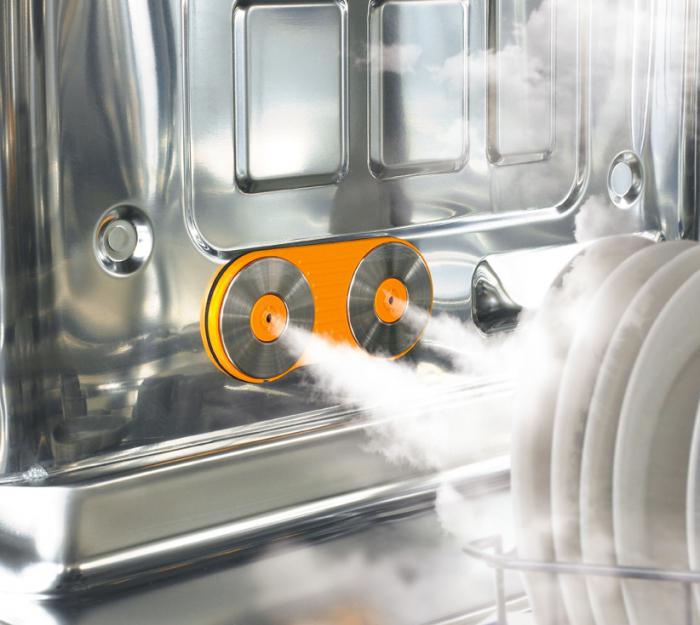
However, drying is best achieved in models equipped with heat exchangers. It does not leave any streaks or stains on the dishes.
Additional functions
A very high-quality and multifunctional dishwasher is produced by Bosch. The indicators located on its front panel also include a timer for delayed start. Having installed right time start of work, you can safely go on a visit. Clean and dry dishes will be waiting for their owners upon their return.
Buyers are also pleasantly surprised by the presence of such a part as “aquastop” among the components. This is a special valve that helps protect neighbors from flooding. If the model has a large number of programs, then this will allow you to place more than just dishes in it. Such a device will wash refrigerator shelves and parts from food processor, baking sheets, microwave tray, etc.
Bosch has equipped its models with a program that allows crystal processing. You can safely place thin glass wine glasses in such dishwashers.
Probability of breakdowns
In order for the Bosch dishwasher to operate normally and without any interruptions, you will need to comply with the requirements specified by the manufacturer in the instructions for the device.
For example, it is worth constantly monitoring the absence of grease and scale on the rocker. And if they are present, the machine should be started without dishes. At the same time, detergent is loaded into it and the intensive washing mode is selected.
The Bosch appliance must only be used with special means. At the same time, after each wash it is necessary to check the filters. If food remains accumulate on them, these parts are removed and washed under hot running water. running water. Otherwise, your Bosch dishwasher will require repairs. Faults will affect the drain pump. It will be blocked by food debris.
According to the manufacturer's recommendations, constant monitoring of all sprinklers is required. They can also become clogged with crumbs or scale. This will significantly reduce the quality of the wash. If clogged, the sprinklers are removed and washed with running water.
Self-diagnosis
Control modules of modern technology are capable of providing information about errors that occur during operation. Bosch appliances - dishwashers - are no exception. They display errors in E0 format. The first character is the initial letter English word"error". Translated, it means “error.” The second character of this format is a number. It indicates an existing fault. Self-diagnosis is carried out when the device is turned on. Before starting operation, the dishwasher checks all its components and parts. And if, for example, it does not detect the presence of resistance in the winding, it will immediately issue the corresponding code.
Water leak
There are many error codes that the dishwasher display shows. However, most often consumers see the inscription “E15”. This malfunction concerns a water leak that the device detected in its housing. The reasons for such a breakdown may be different, but in any case you should not delay repairs. The presence of water in the housing will not lead to anything good.
Problems with drainage
The second most common inscription on the car indicator is “E24”. It means that the Bosch dishwasher is not draining water. To eliminate the malfunction, the siphon and filter located at the bottom of the unit must be checked. The blockage can also occur in drain hose. Sometimes error “E24” is issued after moving equipment. The cause of the malfunction in this case lies in the twisting of the drain hose.
There is also a problem with draining in case of error “E25”. The source of the problem in this case is a malfunction of the pump.



